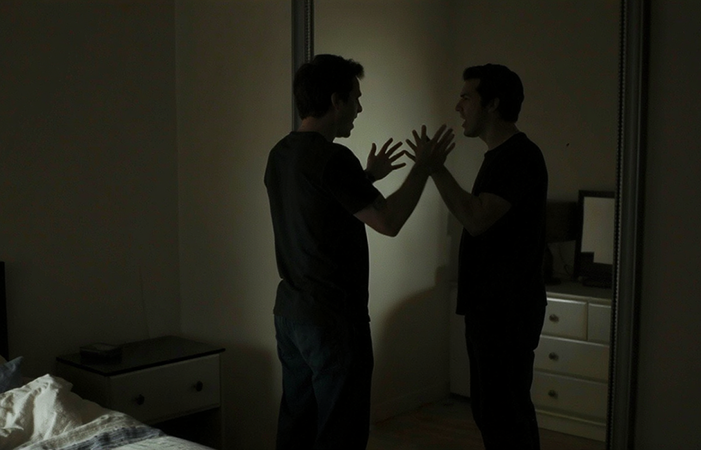
CFSC launches Friendly Fifteen fundraising campaign
May 12, 2025
Major conference advances Guaranteed Liveable Basic Income in PEI
June 13, 2025![]() Have you ever thought about an argument from a long time ago, going over all of the details in your head? Maybe you got to a place of feeling angry or upset and the other person wasn’t even there.
Have you ever thought about an argument from a long time ago, going over all of the details in your head? Maybe you got to a place of feeling angry or upset and the other person wasn’t even there.
I’ve seen participants in our peace skills workshops doing this not only with past conflicts, but even with imagined future ones. People sometimes come into a session and explode about what another person will say and why that irritates them.
A great deal is going on here. There are assumptions, predictions, and of course wanting to maintain a positive self-image and social connections (vital for survival and wellbeing).
What does all this mean? When we’re in conflicts, we might not just be up against a real person or situation. We might be up against our own imaginations. We might be doing much of the work to feel bad by ourselves.

When situations get tense, many of us attribute negative qualities to the “other side.” When this division gets even more severe, it can turn into dehumanization, where we see the other side as less than full people. Then we make assumptions like this: “many of them are driven by sheer sadistic pleasure.”
Many of us have felt this way at some point or other. The other side might cloak its actions in reasons, but actually “those people” are just harming us because they’re evil.
That’s a typical “enemy image.” As the sociologist and conflict expert Heidi Burgess explains, “when they are engaged in a serious conflict, people will normally project their own negative traits onto the other side, ignoring their own shortcomings or misdeeds, while emphasizing the same in the other.” The other side is just different from us.
To get a sense of how far this goes, experiments got participants who were standing in the cold to rate how cold another person would feel under the same conditions. People thought someone who shared their political views would feel colder than someone with different political views.
The same thing happened when it came to eating salty food without having water to drink. People thought that those with different political views would be less thirsty. Even at the level of very basic physical sensations, we can underestimate how similar political opponents are to us.
Studies show that as integrative complexity decreases—as we adopt simpler, more extreme, and more negative ideas about those we’re opposed to—our support for harming them increases.
If you notice yourself slipping into such intense negative feelings or desires to harm people who disagree with you, try to remember that your thinking is too simple.
Many times it’s great to simplify. But when thinking about human beings, simple negative images rob you of your power to connect with them.
That means you’ll be less creative at problem solving. You won’t be as successful at transforming conflicts if that’s something you want to do.
To regain your power, try complexity.
Assume that the person has a richer inner life than you think. Assume that they have feelings and needs, just like you. Assume that they have reasons for their perspective and that you’re totally unaware of some of those reasons. A body of evidence suggests that these are more realistic and empowering assumptions.
The Solutions Journalist Network recommends some great questions that journalists can ask to make a story more interesting and complex. These might inspire you too. Start asking questions like:
- What is oversimplified about this issue?
- Where do I feel torn?
- Is there any part of the other side’s position that makes sense to me?
In CFSC’s workshops we do an exercise where each person shares what it looks and feels like when they’re in a deep conflict. People usually report classic fight, flight, or freeze responses: Heart racing, heat in the face, tight stomach, inability to speak or to stop speaking. Some people report snapping, feeling like they have no control over what they’ll say or do next.
If you experience any of this in a conflict—or even when watching bad news or scrolling on social media—you’re far from alone.
You can try pausing and checking in. What are you feeling and what do you need? These you can keep simple (“I feel scared because I need more harmony around me”). Being aware of your feelings and needs without fighting against them can be a powerful step in reducing your distress.
Skilled meditators who are made to endure pain in psychology labs demonstrate this in a surprising way. They report feeling less distress and severity of pain. Yet their own reports, as well as brain scans, show that they’re very aware of the sensations of the pain.
So what’s going on?
It seems to be that the meditators feel the pain but don’t do as much anticipating future pain, ruminating on past pain, or otherwise heightening the sensations of pain through telling themselves stories. The present pain is there and that’s all.
There seems to be a lesson here that many of us could benefit from during conflicts: Your imagination may drive a good deal of the most unpleasant experiences. We can make conflicts worse for ourselves depending on the stories we tell ourselves about them.
A version of this post originally appeared on Psychology Today.




